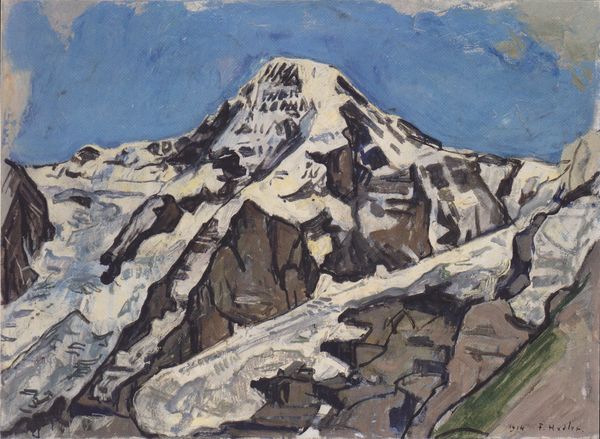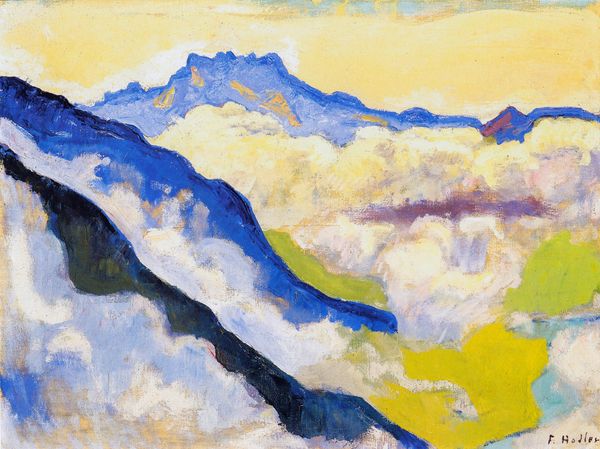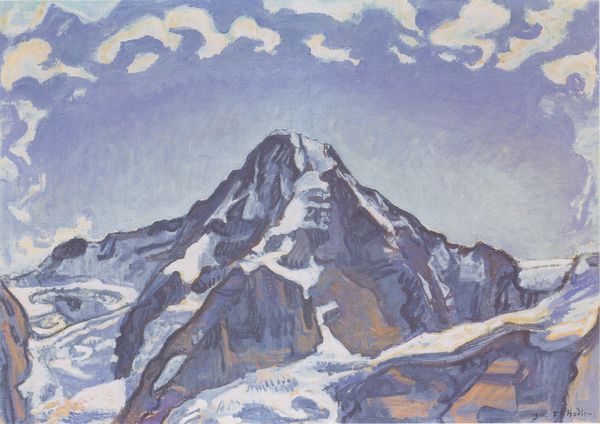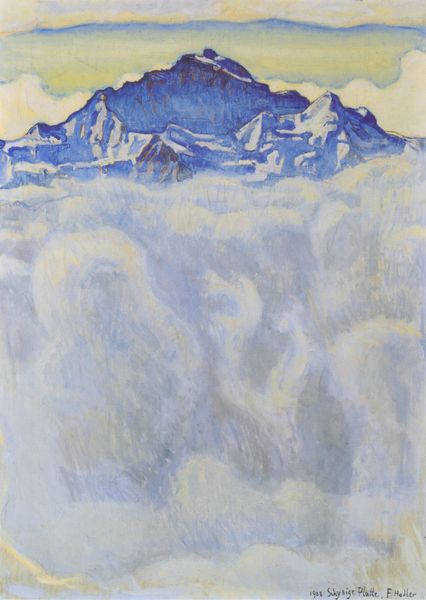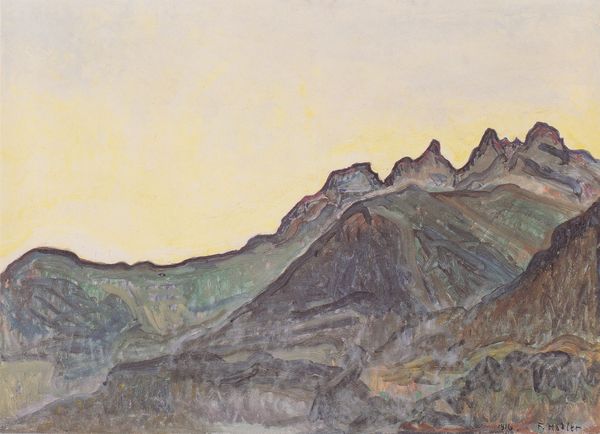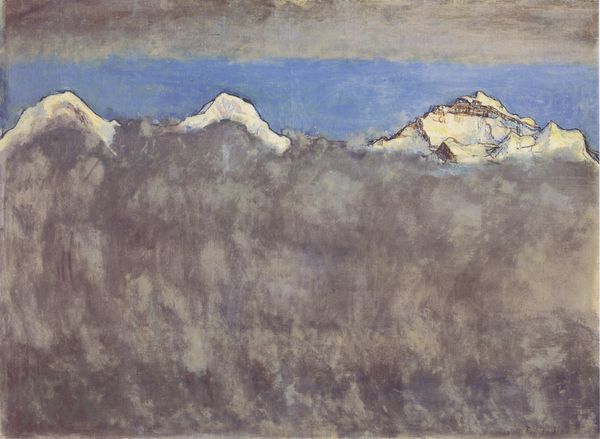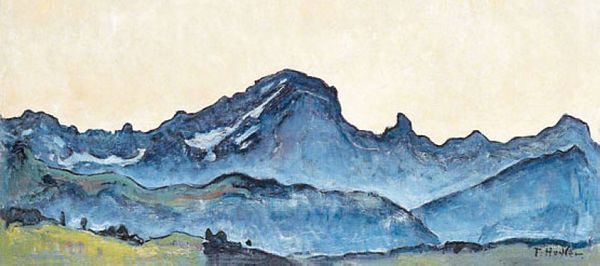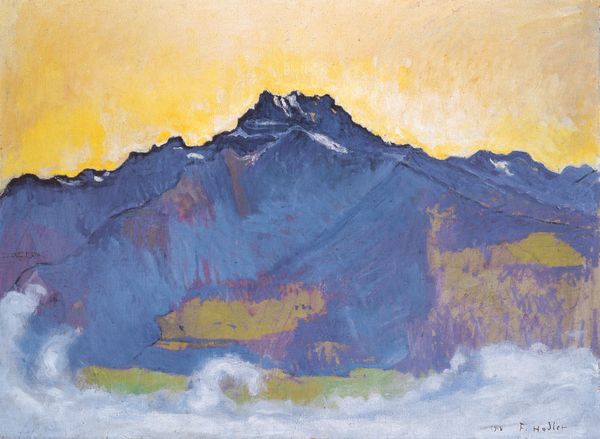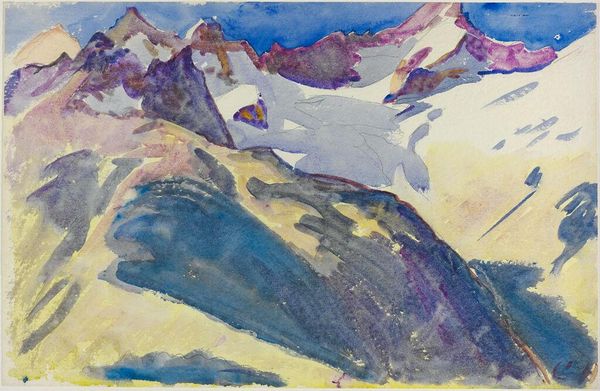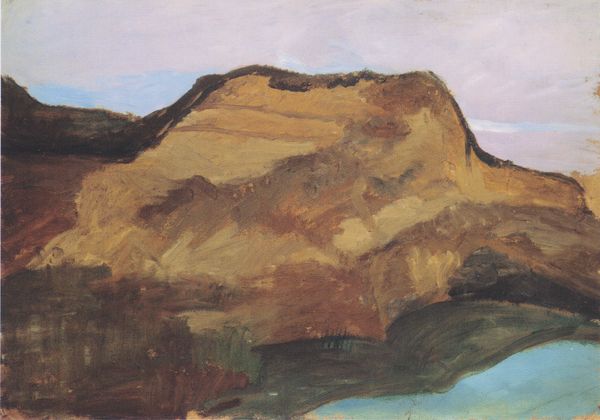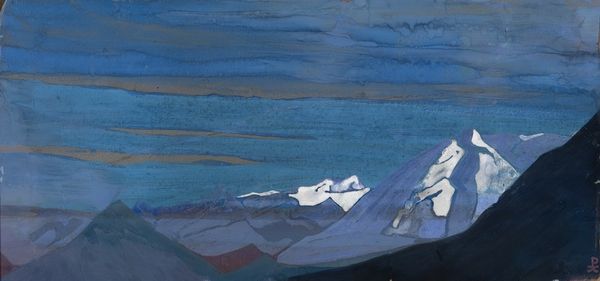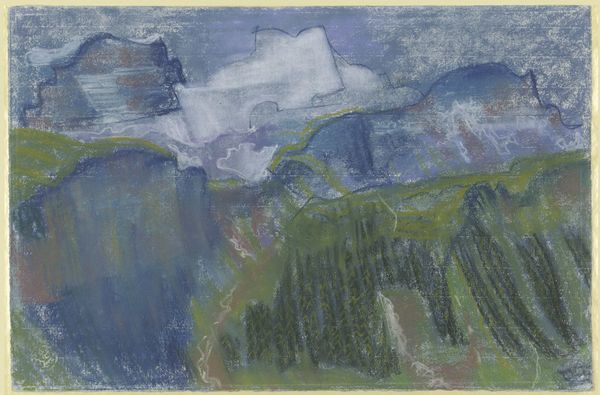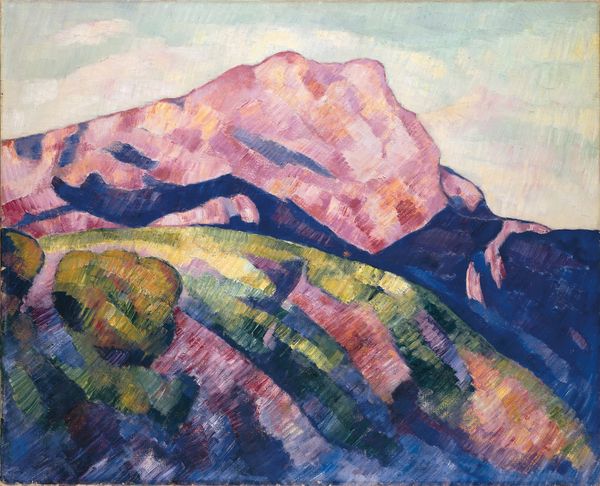
Dimensions: 73 x 92 cm
Copyright: Public domain
Curator: Ferdinand Hodler painted this oil on canvas, titled "Jungfrau massif and Schwarzmonch," in 1911. What's your initial reaction? Editor: Stark, imposing, but with an unexpected tenderness in the rendering. The impasto layers create a tactile sense of the mountain's surface, but it's softened somehow. Curator: Absolutely, and considering Hodler’s exploration of landscape, the mountain range takes on profound significance. Hodler situates the individual experience within a cosmic totality. How does the symbolic weight of the mountain range inform our reading of it as more than just landscape? Editor: The visible layering speaks to time, and the very concrete layering of material; the work becomes a record of its own making. How much physical labor was involved in building up those paint layers, and what does that process tell us about Hodler's relationship with the land itself? It's almost devotional. Curator: Hodler engaged with landscape painting as a vehicle for exploring philosophical ideas related to nature and humanity's place within it. His concept of Parallelism—the idea that nature operates according to repeating patterns—is evident. Look how the ridgelines mimic one another! It gives the scene a rhythmic, almost musical quality. Editor: The near monochromatic range limits a sense of detail. The artist seemed more interested in depicting mass and depth through a material engagement with paint. He’s building rather than depicting this imposing structure. Curator: Hodler faced personal tragedies, and during that time his paintings reveal introspection and contemplation. Art becomes an anchor in that moment. So what possibilities and restrictions did the artist face with expressionistic style while conveying a personal burden? Editor: The almost brutal application of paint could be a release for him; turning trauma into a physical, almost sculptural artifact. Maybe the real expression here isn't just what we see, but the action, the repetitive labor, that went into its creation. Curator: I see Hodler’s mountain as an exercise in elevating that which is outside oneself. Thanks for pointing toward the artist’s engagement with the artwork through physical endeavor, helping us come to terms with the expressionistic and spiritual in relation to making art. Editor: Likewise. Reflecting on the materiality and making processes invites us to think beyond aesthetic appreciation and understand the artist's hand and spirit that engages and materializes such expression.
Comments
No comments
Be the first to comment and join the conversation on the ultimate creative platform.
